#atoll fruit-dove
Explore tagged Tumblr posts
Text
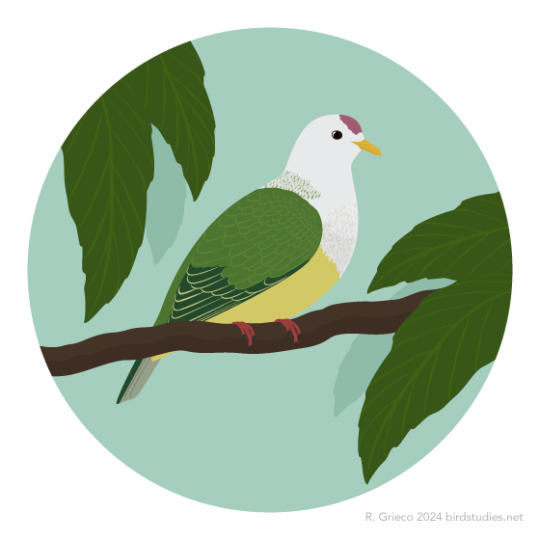
February 12, 2024 - Atoll Fruit-Dove (Ptilinopus coralensis) Found only in the Tuamotu Archipelago in French Polynesia, these fruit doves live in forests, scrub, and overgrown coconut plantations. They eat insects, seeds, and fruit, foraging mostly on the ground. Little is known about their breeding behavior, though juveniles have been found in February and May and there is one unconfirmed report of a flimsy nest built in scrub with a single egg. They are classified as Near Threatened by the IUCN due to suspected population declines from habitat degradation and introduced predators.
#atoll fruit-dove#fruit dove#columbidae#ptilinopus coralensis#bird#birds#illustration#art#tropical#birblr art
107 notes
·
View notes
Text


[ID: two images of fruit doves sitting in trees. they are both white with green wings and a pink head. the Atoll fruit dove has a yellow underside, while the Red-bellied fruit dove has a pink one.]
#Red-bellied fruit dove#Atoll fruit dove#columbidae contest#pigeons#polls#columbidae#tournament poll#dove
30 notes
·
View notes
Note
Chanced upon your blog and it’s very rad! Can I ask for some birds from the South Pacific?
Thank you very much. Here you go... First, lets start in Fiji:


Golden Fruit Doves (Ptilinopus luteovirens), T - female and B - male, family Columbidae, order Columbiformes, endemic to Fiji
photographs by JJ Harrison

Collared Lory (Vini solitaria), family Psittaculidae, order Psittaciformes, endemic to Fiji
photograph by JJ Harrison

Orange Dove (Ptilinopus victor), male, family Columbidae, order Columbiformes, endemic to Fiji
photograph by Chris Wiley

Fiji Parrotfinch (Erythrura pealii), family Estrildidae, endemic to Fiji
photograph by Keith Barnes

Maroon Shining Parrot (Prosopeia tabuensis), family Psittaculidae, order Psittaciformes, endemic to Fiji
photograph by Lars Peteersson

Ultramarine Lorikeets (Vini ultramarina), family Psittaculidae, endemic to the Marquesas Islands (South Pacific)
ENDANGERED.
photograph by peterodekerken

Red-bellied Fruit Dove (Ptilinopus greyi), family Colmbidae, order Columbiformes, found in New Caledonia, Santa Cruz Islands (Solomons), and Vanuatu
photograph by Paul Maury

Yellow-bibbed Fruit Dove (Ptilinopus solomonensis), family Columbidae, order Columbiformes, found in the Solomon and Bismark Islands
photograph by Mathieu Bally

Makalena aka Short-tailed Albatross (Phoebastria albatrus), parent with chicks, family Diomedeidae, order Procellariiformes, Midway Atoll
photograph by Jlfutari
480 notes
·
View notes
Text
file : interesting creatures #2 : endangered birds (list)
A
abbot's booby abbot's starling aberdare cistocola abyssinian longclaw aceh pheasant african white-backed vulture african black oystercatcher african gray parrot african green broadbill african penguin african skimmer agulhas long-billed lark akekee akepa akiapola'au akikiki ala shan redstart alagoas antwren alagoas curassow alagoas foliage-gleaner alagoas tyrannulet alatroa grebe albert's lyrebird albertine owlet aldabra brush warbler aldabra drongo algerian nuthatch allpahuayo antbird altamira yellowthroat amami jay amani sunbird amazonian parrotlet amber mountain rock thrush ambon yellow white-eye amsterdam albatross anambra waxbill ancient antwren andaman crake andaman cuckoo-dove andaman drongo andaman hawk-owl andaman scops-owl andaman serpent eagle andaman treepie andaman wood pigeon andaman woodpecker andean condor andean flamingo angolan cave-chat anianiau anjouan island sparrowhawk anjoan scops-owl ankober serin annobon white-eye antioquia bristle-tyrant antipodean albatross antipodes green parakeet apo myna apo sunbird apolinar's marsh wren appert's tetraka apurimac spinetail aquatic warbler arabian grosbeak arabian woodpecker araripe manakin araucaria tit-spinetail archbold's bowerbird archer's lark ascension frigatebird ash's lark ash-breasted tit-tyrant ash-throated antwren ashy antwren ashy storm-petrel ashy thrush ashy-breasted flycatcher ashy-headed laughingthrush asian dowitcher asian golden weaver (why does it sound like a spider) asian green broadbill atitlan grebe atiu swiftlet atlantic petrel atlantic royal flycatcher atlantic yellow-nosed albatross atoll fruit-dove atoll starling auckland islands rail auckland islands shag auckland islands teal auduoin's gull austen's brown hornbill austral rail australasian bittern australian bustard azores bullfinch azores wood pigeon azure jay azure-breasted pitta azure-rumped tanager azure-shouldered tanager
sources earthsendangered.com [link]
send an ask if you want more info, or if you've got more to share! please use this post as a source if you post or use information you found on it!
#+ file : interesting creatures#+ subfile : endangered birds#birds#endangered animals#australian animals#australia#asian animals#asian birds#australian birds#endangered species#birds are so cool dude#some of these names are hilarious#and some of them#struck feelings into my heart
1 note
·
View note
Text
✧ Bird of the Day ✧
꧂ Atoll Fruit Dove
p. coralensis

✧ Scientific Classifications ✧
⟣ Order ;; Columbiformes
⟣ Family ;; Columbidae
⟣ Genus ;; Ptilinopus
⟣ Species ;; Coralensis
✧ Conservation Status ✧
⟣ Near Threatened ⟢

✧ Quick Intro ✧
⟣ Atoll Fruit Doves are a tropical species threatened by habitat loss and predation from rat colonies that inhabit it's islands. It is the only tropical pacific Dove species that is exclusive to low coral atolls.
✧ Feeding ✧
⟣ Atoll Fruit Doves feed on seeds, insects and tree leaves. They often forage for seeds and insects on the ground, or among tree branches and roots. They also eat the leaves of the Guettarda speciosa (often referred to as the tafano or kahaia) shrub which is best known for its fragrant flowers and large green veined leaves.

✧ Size ✧
⟣ The Atoll Fruit Dove grows up yo 24 centimeters tall, and can reach 100 grams in weight.
✧ Inhabited Region ✧
⟣ Atoll Fruit Doves inhabit islands and low atolls in the Tuamotu archipelago in French Polynesia. It lives in tropical and subtropical forests, and abandoned coconut plantations.

✧ My Rating ✧
⟣ 4.8/5 ; I really love this species! Not only are they gorgeous, but they're one of the most colorful dove species i've seen, and i'm a big fan of doves to begin with :)
#ornithology#bird#did system#autism#special interest#birds#birdoftheday#birdinfo#information#informative#infopost#infodump
1 note
·
View note
Text
Fauna
By Jeremiah Olmstead
By the time the people on the Serenity came ashore, the islands were covered in pristine forests. It was like God’s Take Two of Eden. It took a bit of research for scientists to realize that the forests aren’t as ancient as they looked. Today, we now know that the biggest of the islands had been an actively erupting volcano. Much like how Krakatoa would a few centuries later, Mount Balder blew its top so hard, almost nothing could live there.
Of course, it didn’t stay that way for long. Just like Krakatoa, Indisclosednia became green again. It’s its own little everyday miracle.
This also means that everything that lived here today got here much sooner. Many islands in the South Pacific have plants and animals you wouldn’t find anywhere else. Not in Indisclosednia. Every animal you find here is a common (or sometimes, rare) species in the region that just swam, flew, or floated in here. We believe this was because the islands were new. Mount Balder was likely still underwater until about a thousand years ago, and it’s only been quiet for a few centuries.
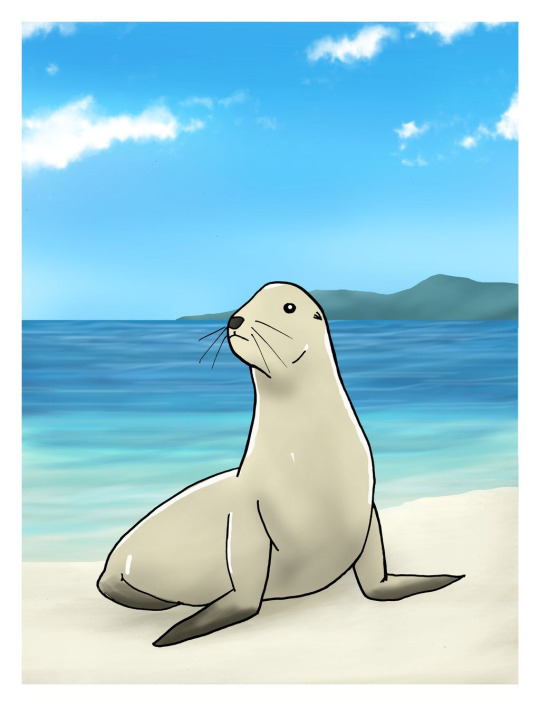
Since her reintroduction to the wild, Rascal the rescued New Zealand Sea Lion has acted as the unofficial animal ambassador for the country’s conservation movement.
Mammals
Islands like these couldn’t be settled by land mammals because most of them couldn’t swim very far. Almost all of the land-dwelling mammals you see in Indisclosednia came with the humans. The one exception are about five species of native bats, which include the two species of fruit bats that annoy the fruit farmers to this day. The insectivorous bats, on the other hand, we encourage.
Aquatic mammals, however, are a bit more common. Whales can be spotted not far off from the atolls, while the lagoons are calving and feeding grounds for dugongs (Dugong dugon). A small straggler colony of New Zealand sea lions (Phocarctos hookeri) has made its home in the southern shores just on the outskirts of Hoonoisweir. They are under government protection and are taken as a symbol of friendship between New Zealand and Indisclosednia.
Birds
Indisclosednia is a bird’s paradise. Sea birds are the most familiar to the islands’ inhabitants. Gulls, boobies, albatrosses, and terns have breeding colonies in the beaches of the west of the main island and on the atolls. Wading birds are a common sight in the lagoons and mudflats north of Arboria. The sea bird colonies are so huge, they leave behind a lot of poop. Harvesting the poop as guano is one of our most important industries.
The lush rainforests surrounding Mount Balder are home to several more bird species. Their presence adds a riot of color to the country’s green carpet. Common forest-dwelling birds include common species like the Pacific robin (Petroica pusilla), blue-crowned lorikeet (Vini australis), and silvereye (Zosterops lateralis) to widely distributed yet vulnerable species such as the palm lorikeet (Charmosyna palmarum) and friendly ground dove (Alopecoenas stairi).
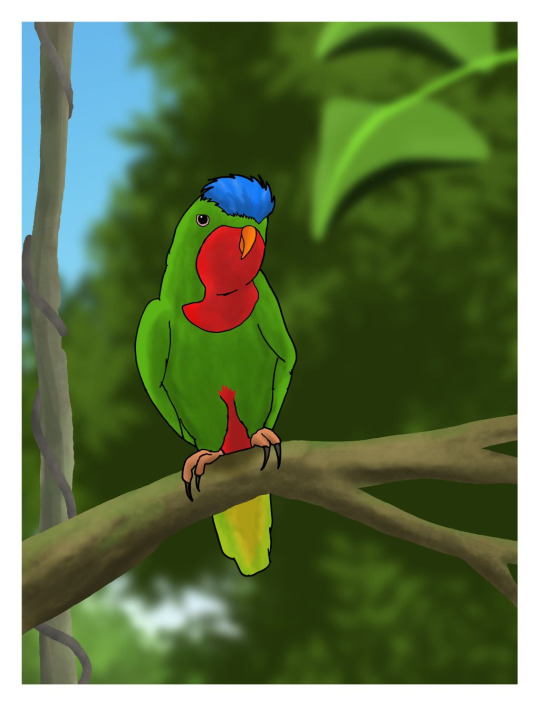
A blue-crowned lorikeet perched in a tree at Mount Balder National Park
Reptiles and Amphibians
Amphibians and reptiles likely drifted to or swam up from neighboring places. The largest terrestrial animal known in Indisclosednia is the saltwater crocodile (Crocodylus porosus). They’re not especially common here. While you can spot them sometimes,they haven’t been spotted laying eggs here and we assume they’re just transients from other islands.
Other well-known reptilian visitors include the hawksbill (Eretmochelys imbricata), olive ridley (Lepidochelys olivacea) and green (Chelonia mydas) sea turtles. Unlike the crocodile, they are known to lay their eggs in the undisturbed white sand beaches. Sea snakes and kraits are a common hazard in the reefs and lagoons in the region.
All of the species of frogs and land reptiles such as iguanas, skinks, and geckoes are known to occur in other islands. They likely floated to the archipelago from driftwood from places as far as Fiji, Samoa, and New Caledonia.
Terrestrial Invertebrates
Invertebrates make up the largest group of animals in the archipelago. The land invertebrates alone make up 2,000 species. Many of them live in the tree tops of the rainforests. They serve an important role in keeping the forests alive. Ants and wasps are symbiotic pollinators to many species of fruiting trees, figs especially.
One species of mosquito (Aedes polynesiensis) is native to the islands, much to the people’s annoyance. Their numbers are thankfully kept in check by an assortment of native predators, including the bats. Other bothersome invertebrate neighbors include the coconut crab (Birgus latro) and several species of land crabs (Cardisoma carnifex, Geograpsus grayi).
There have been as-yet unconfirmed reports of an undetermined species of Tahitian snail, thought to be critically endangered, being naturalized in the gardens in Baywood. And speaking of introduced species, non-native mosquitoes, house flies (Musca domestica), and red ants (Solenopsis invicta) are annoyances to watch out for. Especially the ants.
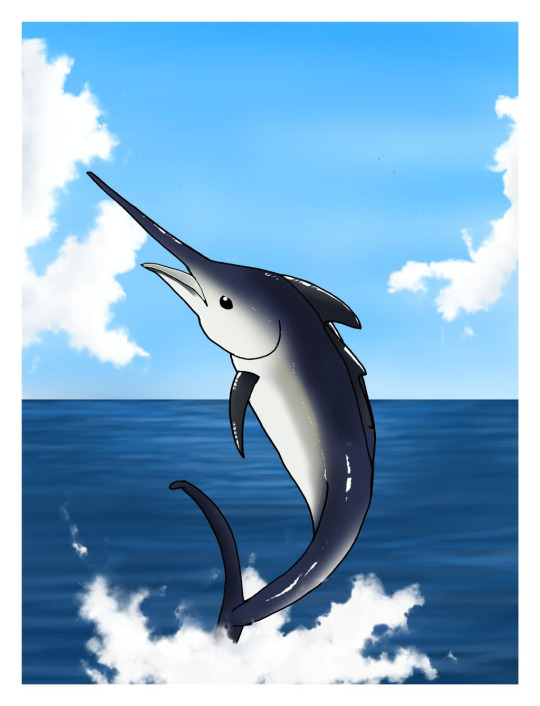
Black marlin are a favourite of anglers. The fish is only available to be caught for consumption in a narrow band of the year.
Aquatic Life
The various aquatic habitats in Indisclosednia teem with life. The reefs and lagoons that surround the islands greet the eager diver with a colorful array of fish, coral, and other invertebrates. Watch out for the black-tip reef sharks (Carcharhinus melanopterus), though. They breed in some of the lagoons and shouldn’t be disturbed.
The rivers themselves are home to a few anadromous (fresh-and-saltwater) species. Some of these species can be fished for and eaten. Bull sharks (Carcharhinus leucas) are not unknown in the river systems in the main island, but don’t count on catching them.
For anglers, the real prize is in the open water. Pelagic fish such as skipjack (Katsuwonus pelamis), albacore (Thunnus alalunga), and yellowfin tuna (Thunnus albacares) and game fish like black marlin (Istiompax indica) are found in relative abundance. The presence of marine mammals means that great white sharks (Carcharodon carcharias) are also frequently sighted in the waters.
Conservation
The most common threats to the fauna of Indisclosednia are habitat loss and pollution. Main factors include urban and exurban sprawl, uncontrolled expansion of the fruit and sugar plantations of the north, and the destructive activities of previously unregulated industries like forestry, commercial fishing, oil exploration, and phosphate mining. Illegal whaling is believed to take place just outside our country’s waters.
For a time, eating sea turtle eggs was sadly endorsed by my own father during his term as prime minister, and was not criminalized, until a few years after his term.
Recent legislation brought much needed protection for the endangered species that call the island home. We have since built several national parks to help preserve the natural beauty of the islands. Development is limited around beaches where sea birds, turtles, and sea lions reside.
We also follow a strict catch and release policy for sports fishing. Trophy fish like marlin must be released unless they’re to be eaten. Catching them for consumption is seasonal and regulated by the government.
4 notes
·
View notes
Text
!!!ROUND!!! 1!!!! POLL!!!! 139!!!!
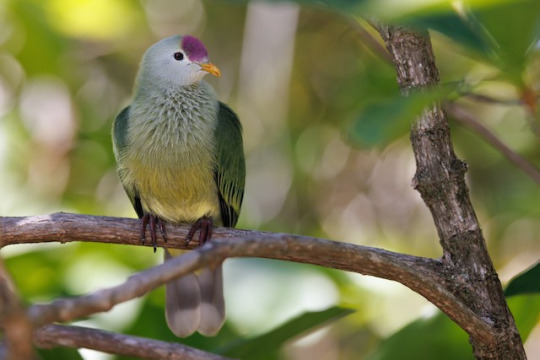
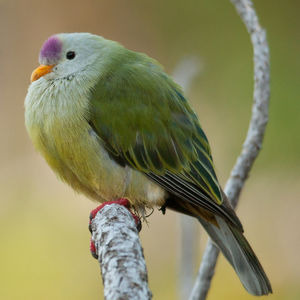
[ID: two doves with white bodies, green wings and purple on their heads perch in trees. the first is the Makatea fruit dove, the second is the Atoll fruit dove]
do you like to eat fruit? these pigeons sure do!
Makatea fruit dove!! Atoll fruit dove!! soo many cool hats!!
14 notes
·
View notes